Using Boat Anchors for Drift Free
Kayak Fishing
Boat anchors are used with kayaks for the same reasons they are used for oil tankers, cruise ships or sailboats – to hold them still. They accomplish this by penetrating the bottom and creating a suction when the soft bottom material encloses the anchor or by hanging on rocks or bottom structure.
Most fishermen have a love-hate relationship with wind. More hate than love I suspect. That distaste for wind is compounded when fishing from a kayak on still water. You arrive at a promising hole and before you can position yourself to make that perfect cast the wind has moved you away from, or worse, right over the target area.
If you fish rivers you may find that while wind isn’t the problem, current is even worse about moving you into or past the area or pool you intended to fish. Holding your position is close to impossible. The ability to anchor when river fishing is critical. While you may sometimes be able to beach your kayak and wade fish not every good hole is close to a gravel or sand beach area. Quite often the deepest holes are out of reach but from a canoe or kayak.

Boat Anchor Types
The style of anchor used in any fishing situation will be dictated by the water depth and type of bottom of the river or lake where you are fishing. Here are a few appropriate for kayaks.
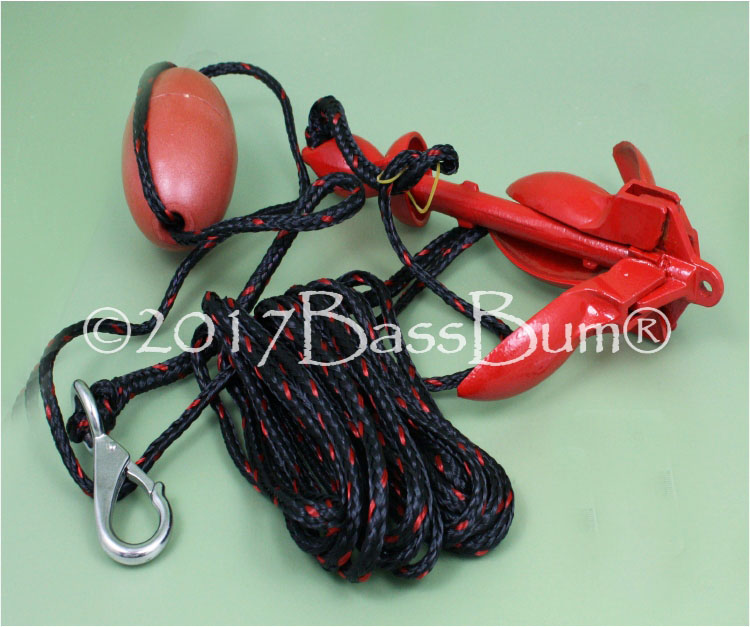 Grapnel Anchor
Grapnel AnchorGrapnel Folding: This four-fluke design, found in weights of 3lb, 5lb and 7lb, is most popular for canoes and kayaks.
The folding arms make storage easy. The three blades allow mud and water flow-through.
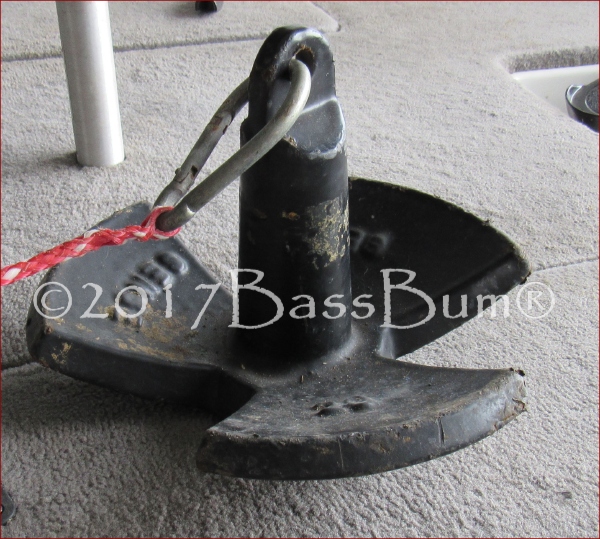 River Anchor
River AnchorRiver: A thick, three-fluke style boat anchor designed for rivers, mud-bottom ponds and lakes. Does a good job holding in wind and current on various bottoms from mud to rock.
The three blades not only hold well but allow for easy retrieval.
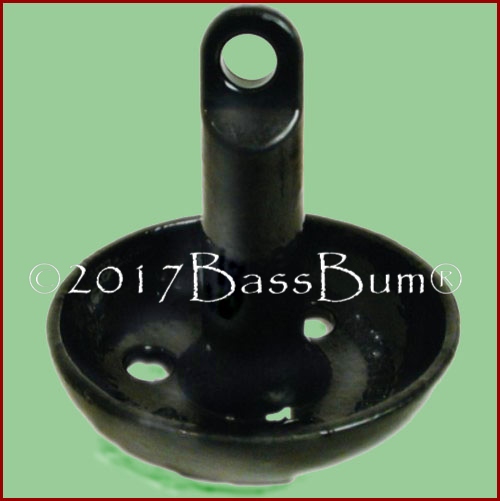 Mushroom Anchor
Mushroom AnchorMushroom: Shaped like a mushroom with drain holes it is designed to bury itself and create a suction on soft bottoms. It is a good choice for muddy and weedy bottoms. The holes allow for the flow-through of mud and water so they are easy to pull up when you're ready to move.
These often have a complete rubber coating which helps reduce noise if moved around on the floor of a kayak.
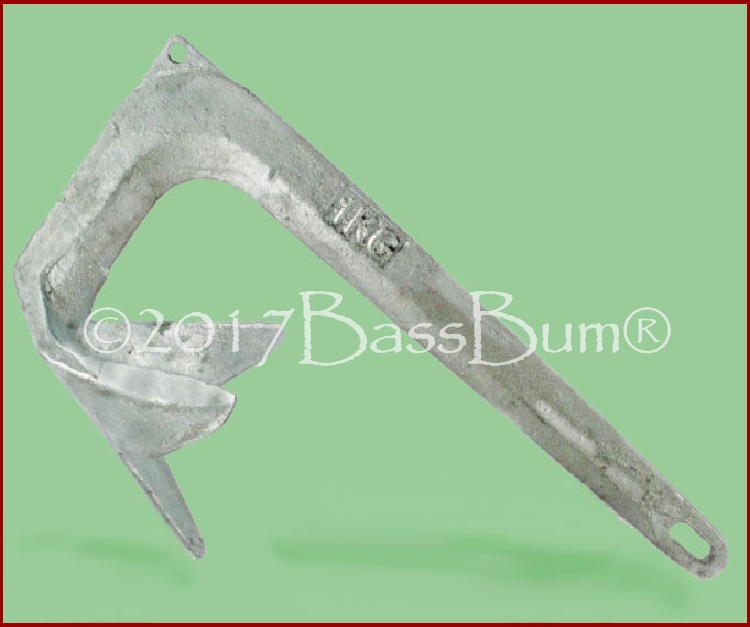 Bruce Anchor
Bruce AnchorClaw (Bruce): The weight of this anchor is not what causes this anchor to hold. Matter of fact, it is an effective lightweight, 4lb anchor that has two flukes that effectively penetrate and hold in softer bottoms. They have a reputation of getting hopelessly stuck in bottoms heavy in boulders and rocks.
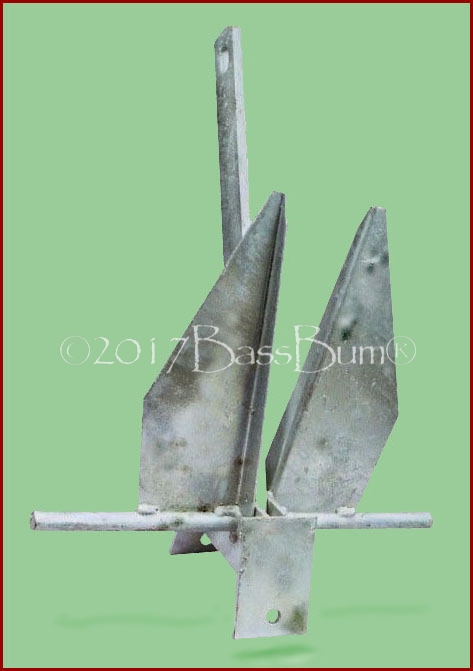 Fluke Anchor
Fluke AnchorFluke (Danforth): Considered the best holding style boat for a variety of bottoms. Usually thought of as the boat anchor of choice for pleasure and fishing boats. In lighter weights it works well for larger fishing kayaks.
These work well in sand and gravel bottoms but have a tendency to "hang up" in large rocks and resist any effort to extract them.

How to Rig a Kayak Anchor
to
Keep It Still
In still water or very low current rivers, kayaks are best anchored from the stern, although there are circumstances where dropping the anchor at the bow makes sense. Why the stern? Because we sit in or on top of kayaks with minimum space to move around. Most casts are confined to within a 180° arc to our front. An anchor line extending from the front of the kayak presents an obstacle around which a line could be wrapped when fighting a fish.
Whether you want to cast upstream against the current (anchor at the stern) or downstream with the current (anchor at the bow) you will want to be facing the target of your cast. The determining factor of anchoring from the bow or stern is the direction the wind or current is flowing.
From the Stern: See 3 in Picture Below
Let’s say you fishing a river and there are pools, riffles or rapids you want to fish. If you’re up current from the target areas best practice is to fix your position from the stern so you can cast downstream letting your lure flow with the current through the target areas. The normal path food becomes available to river fish.
From the Bow: See 2 in Picture Below
If you have floated past your targets or are traveling upstream to them you would want to secure your kayak from the bow so you can cast upstream and again have your lure move through the area. However, the anchor line poses a problem when fighting the fish.
From the Side: See 1 in Picture Below
Anchoring directly to the side, which is the pivot point on a kayak, is usually a recipe for trouble. Especially if you are in current, even if it’s mild, the water is pushing broadside to the kayak. A kayak is designed to have water flow along its sides and can be turned over by water pushing broadside on it.
Continually pulling up a boat anchor to move it from stern to bow or vice versa takes time and energy and can even risk capsizing. The answer? An anchor trolley.
Anchor Trolley
An anchor trolley is very handy for kayakers. It enables a kayak fisherman to easily change their position to counteract changes in current or wind. They make it quite simple to re-position a boat anchor no matter what the reason. Maybe just to get a better casting angle that has nothing to do with wind or current.
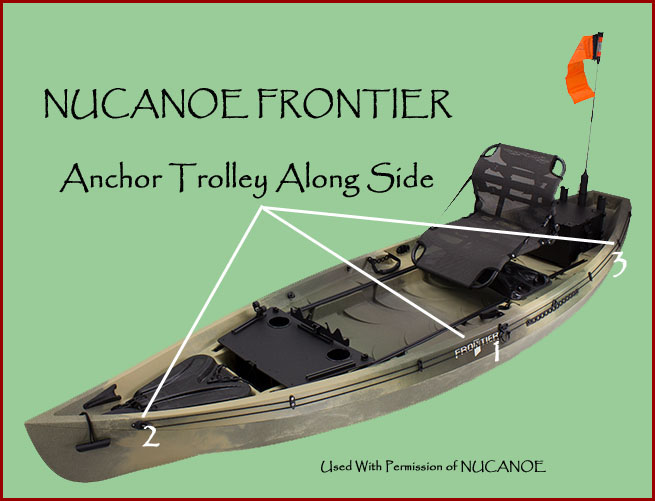
This device attaches to and runs alongside the kayak. It generally has points at the bow (2) and stern (3) where pulleys are attached and through which a line runs and attaches to a ring. The best practice is to use an anchor cleat close to your side where the line can be tied off.
Trolley Components
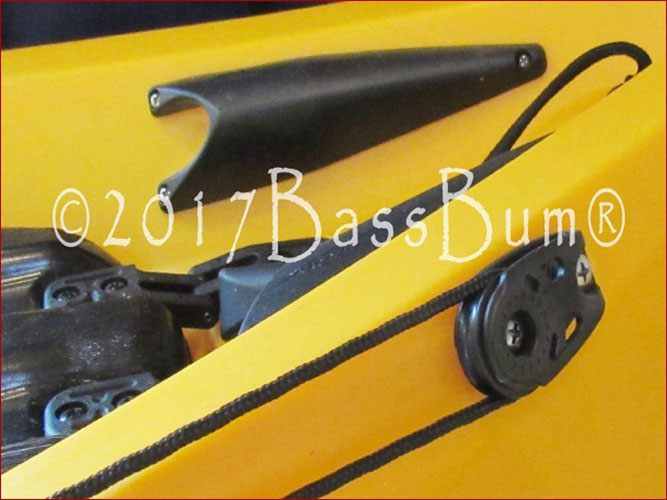 Anchor Trolley Pully
Anchor Trolley Pully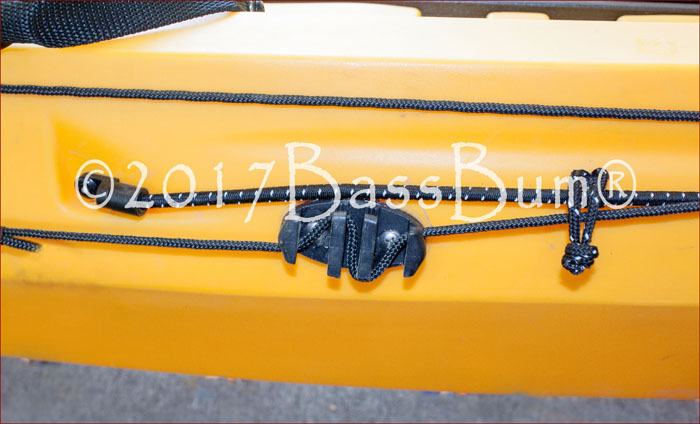 Anchor Trolley Cleat
Anchor Trolley Cleat
Alternatives to Boat Anchors
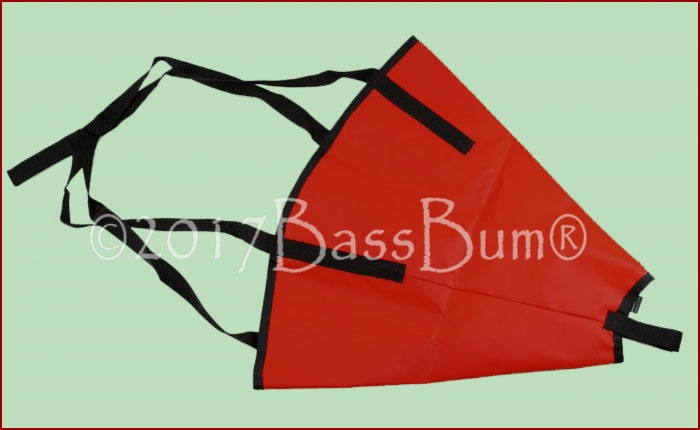 Drift Anchor
Drift AnchorDrift Anchor: Not intended to stop and hold smaller watercraft but rather serve to slow the kayak so the angler can drift fish. I’ve never used one but I’m told a 30” size works well with kayaks.
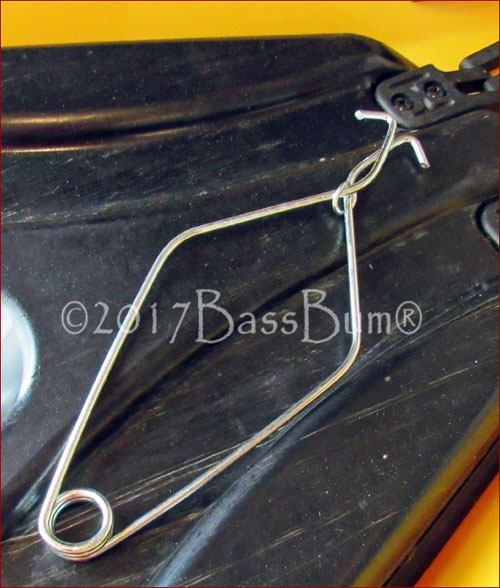 Limb or Brush Grabber
Limb or Brush GrabberLimb Grabber: Sometimes called a brush grabber this little device works quite well to keep your kayak in place fishing close to shore or offshore stickups.
Stake
Out Pole – Of course this just that, a pole. Only effective in shallow water no deeper than 6-8 feet.
Return to Fishing Kayak From Boat Anchors
